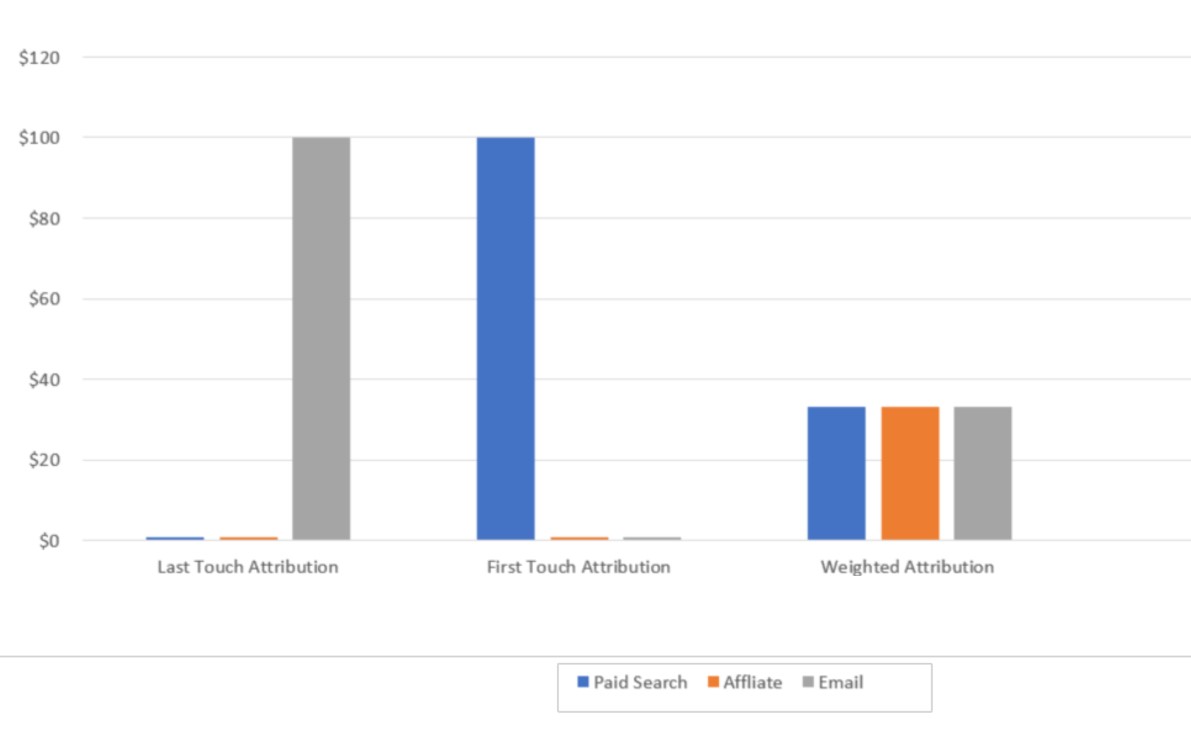Tracking Revenue from Email Click-through sales. This method tracks revenue from a direct click in an email to the site and ultimate conversion. The credit would go to the search channel. But most recipients now check email on their mobile device first, making the conversion path less direct. Web analytics can help attribute sales to the proper marketing channel. The revenue attribution goes to the search ad. If the marketer has assigned equal weighted attribution for each media channel, the search ad, the affiliate site, and the email would each receive 33 percent credit for the sale. Recipients that made a purchase are attributed to that email. Tracking offer or promotion codes that were used in an email promotion is a good way to assess the revenue driven by the email. This method requires unique offer codes for the email channel.
Ecommerce merchants know the value of email marketing. It typically provides the highest return on investment of any marketing channel. In a 2016 Econsultancy survey, 76 percent of companies reported that email offers either “excellent” or “good” ROI.
In this post, I will discuss six ways to measure the effectiveness of email marketing.
Tracking Revenue from Email
Click-through sales. This method tracks revenue from a direct click in an email to the site and ultimate conversion. It typically requires the use of a web analytics tool to capture coded links, such as UTM parameters, from the email click to the website, to purchase.
The benefit of using this method is it tracks immediate sales from an email. However, it does not capture the potential, long-term impact that an email may have if users vary their purchase paths.
For example, a shopper may have clicked an email with the intention to purchase but was interrupted by a phone call. The shopper later returned via a Google Search and completed the order. This behavior would not credit the email. The credit would go to the search channel.
Before the rise of mobile devices, the path an individual took from click to purchase was more streamlined and easier to measure. But most recipients now check email on their mobile device first, making the conversion path less direct.
According to Campaign Monitor, an email service provider, in 2018 mobile users checked their email three times more often than non-mobile users. This is good news for retailers as more people are likely reading their email. But it makes measuring the impact more difficult.
Single-touch attribution. Web analytics can help attribute sales to the proper marketing channel. “First touch” and “last touch are the two most common single-touch attribution methods.
- First touch. A prospective customer clicks on a…

COMMENTS